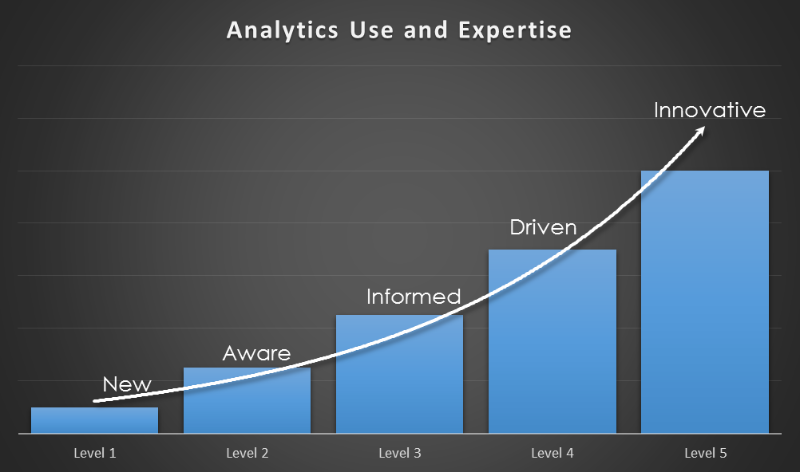Change has proven to be a hard thing for many organizations. But when you’re not moving forward, your competitor is. Ensuring the adoption of analytics and growing into a more data-driven organization is critical but it needs a clear strategy to be successful.
These three tips will help you overcome any barriers to the use of analytics and build a strategy for analytics adoption in your organization.
Grow analytical curiosity
Advanced business intelligence (BI) tools deliver self-service analytics, or ”approachable analytics” as I like to call them. By making complex analytics like forecasts, correlations and decision trees approachable, you can trigger the curiosity of your business leaders and power users. After all, curiosity is a logical next step when working with data, especially when the visual representation helps decision makers understand what they see. (Also see, what you never expected to see with Data Visualization.)
Those decision makers who care about analytics and are able to meet their information needs through a self-service model can start visually exploring data and applying some analytics with little or no statistical knowledge.

Going beyond classic BI and applying statistical analysis, can grow your degree of intelligence improve your competitive advantage. As your analytics needs evolve, you can invest in more statistical skills or advanced tools that fit the analytical level of your organization.

See also this nice piece by Gary Cokins: The evolution of the data analyst species which describes the maturity of the analysts in your organization.
Favor choice over obligation
Following on the previous point, you can either enable your employees with the things they are comfortable with or provide them with tools and information that suits their position, context and purpose. It’s important that you make your employees feel comfortable with the things they have to do. Someone once said:
“Without choice, there can be no virtue.”
And this is true for analytics as well. If your business users and power users don’t have a choice, you’ll not get the most out of it.
It’s the same with standard reports in many organizations. Reports are created and presented for all types of roles, but in practice you’ll see that only a small number of these reports are effectively used. Therefore, it is important to provide self-service capabilities, so information can be developed and included in reports that has meaning to the information consumer.
If you’re wondering how self-service fits in with standard reports in your governed environment, you can read more about it here.
Link to a business case
The third key to success is to link any analytical project to a business goal and to the strategy of your organization. If you are analyzing something that isn’t linked to the vision of your organization, it might be very difficult to take action on your findings.
Therefore, it’s good to pick one business goal in an area where improvement is possible and insights are required. Starting on one case will also make it easier when still in the adoption phase of analytics. The focus can be on that specific business case and when there’s output from the analysis, you can tie it back to the strategy which will help to drive change with the endorsement of senior executives.
Once the changes are translated into ROI, the cycle is complete and more investments can be made in analytical projects that will also start from a business case, support the corporate strategy and have a good ROI. According to Nucleus research analytics projects provide an ROI of $13 for every dollar spent.
Conclusion
We can conclude that analytical use and expertise is something you have to build; it takes time when you’re new to analytics.
 Ensuring that basic analytics are available in an approachable way will make it easier for your employees to experiment with data.
Ensuring that basic analytics are available in an approachable way will make it easier for your employees to experiment with data.
Employees can choose to do something with the information when they feel ready, and providing tools they feel comfortable with will help them explore data in a visual way.
When all this is in support of the business strategy and linked to a business case, executives will feel that it contributes to the best of the company.
And remember: start small and grow big. The value out of your analytics will grow alongside with your investment.